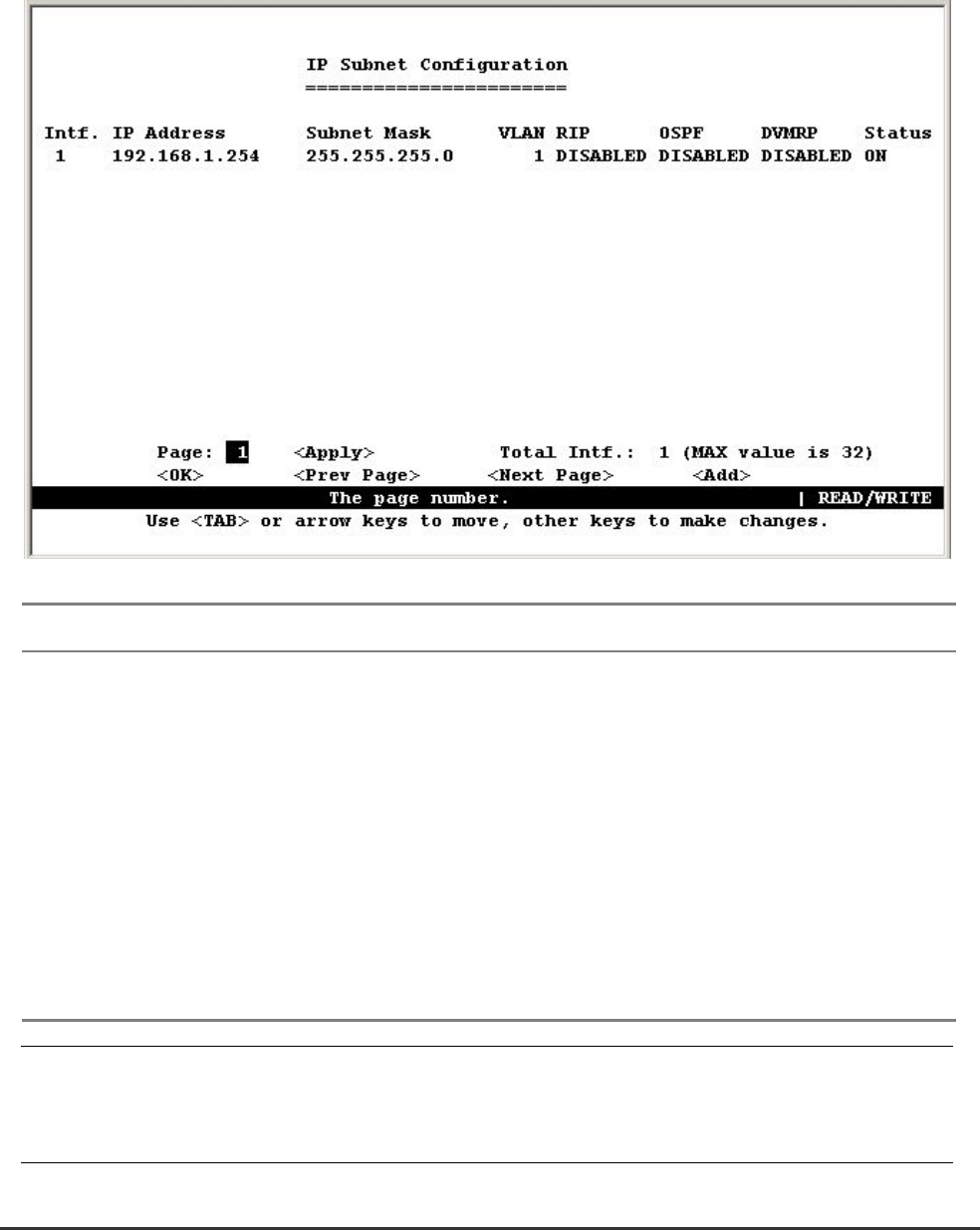Gigabit Ethernet Switch User's Manual
Table Of Contents
- Chapter 1. Introduction
- Chapter 2. Installing the Switch
- Chapter 3. Switch Management
- Chapter 4. Console Interface
- 4.1 Login Screen
- 4.2 Main Menu
- 4.3 System Information Menu
- 4.4 Management Setup Menu
- 4.5 Device Control Menu
- 4.5.1 Setting the System Operation Mode
- 4.5.2 Layer 2 Menu
- 4.5.3 Using the Bridge Menu
- 4.5.4 Configuring Virtual LANs
- 4.5.5 Configuring IGMP Snooping
- 4.5.6 Configuring IP Settings
- 4.5.7 Security Menu
- 4.5.8 Jumbo Packet Configuration
- 4.6 Monitoring the Switch
- 4.6.1 Displaying Port Statistics
- 4.6.2 Layer 2 Address Tables
- 4.6.3 Displaying Bridge Information
- 4.6.4 Displaying VLAN Information
- 4.6.5 IP Multicast Registration Table
- 4.6.6 IP Address Table
- 4.7 Resetting the System
- 4.8 Logging Off the System
- Chapter 5. Web Interface
- 5.1 Web-Based Configuration and Monitoring
- 5.2 Navigating the Web Browser Interface
- 5.3 Panel Display
- 5.4 Main Menu
- 5.5 System Information Menu
- 5.6 Management Setup Menu
- 5.7 Device Control Menu
- 5.7.1 Layer 2 Menu
- 5.7.2 Using the Bridge Menu
- 5.7.3 Configuring Virtual LANs
- 5.7.4 Configuring IGMP Snooping
- 5.7.5 Configuring IP Settings
- 5.7.6 Configuring Security Filters
- 5.7.7 Jumbo Packet Configuration
- 5.8 Monitoring the Switch
- 5.9 Resetting the System
- Chapter 6.Advanced Topics
- Appendix A Troubleshooting
- Appendix B Pin Assignments
- GLOSSARY

WGS3 Layer 3 Switch User’s Manual
- 62 -
4.5.6.1 Subnet Configuration
Use this menu to specify an IP interface for any VLAN configured on this switch that needs to
communicate with a device outside of its own group (that is, another network segment). You also need to
define a VLAN for each IP subnet connected directly to this switch. Note that you must first create a
VLAN as described under “Configuring Virtual LANs” before configuring the corresponding subnet. If you
need to manage the switch in-band then you must define the IP subnet address for at least one VLAN.
Parameter Description
IP Address The IP address associated with the specified VLAN interface. In general, it is the
router IP address for the specified VLAN members.
Subnet Mask A template that identifies the address bits in the host address used for routing to
specific subnets. Each bit that corresponds to a “1” is part of the network / subnet
number; and each bit that corresponds to “0” is part of the host number.
VLAN The VLAN associated with this IP interface.
RIP Routing Information Protocol for unicast routing.
OSPF Open Shortest Path First unicast routing protocol.
DVMRP Distance-Vector Multicast Routing Protocol.
NOTE: Use the <Next Page> and <Prev Page> buttons to scroll through the subnet configuration table.
To display a specific page, set the page number in the Page field and then press <Apply>. To
modify an IP interface, highlight the entry in the table and press Enter. To add an IP interface,
press <Add>.










